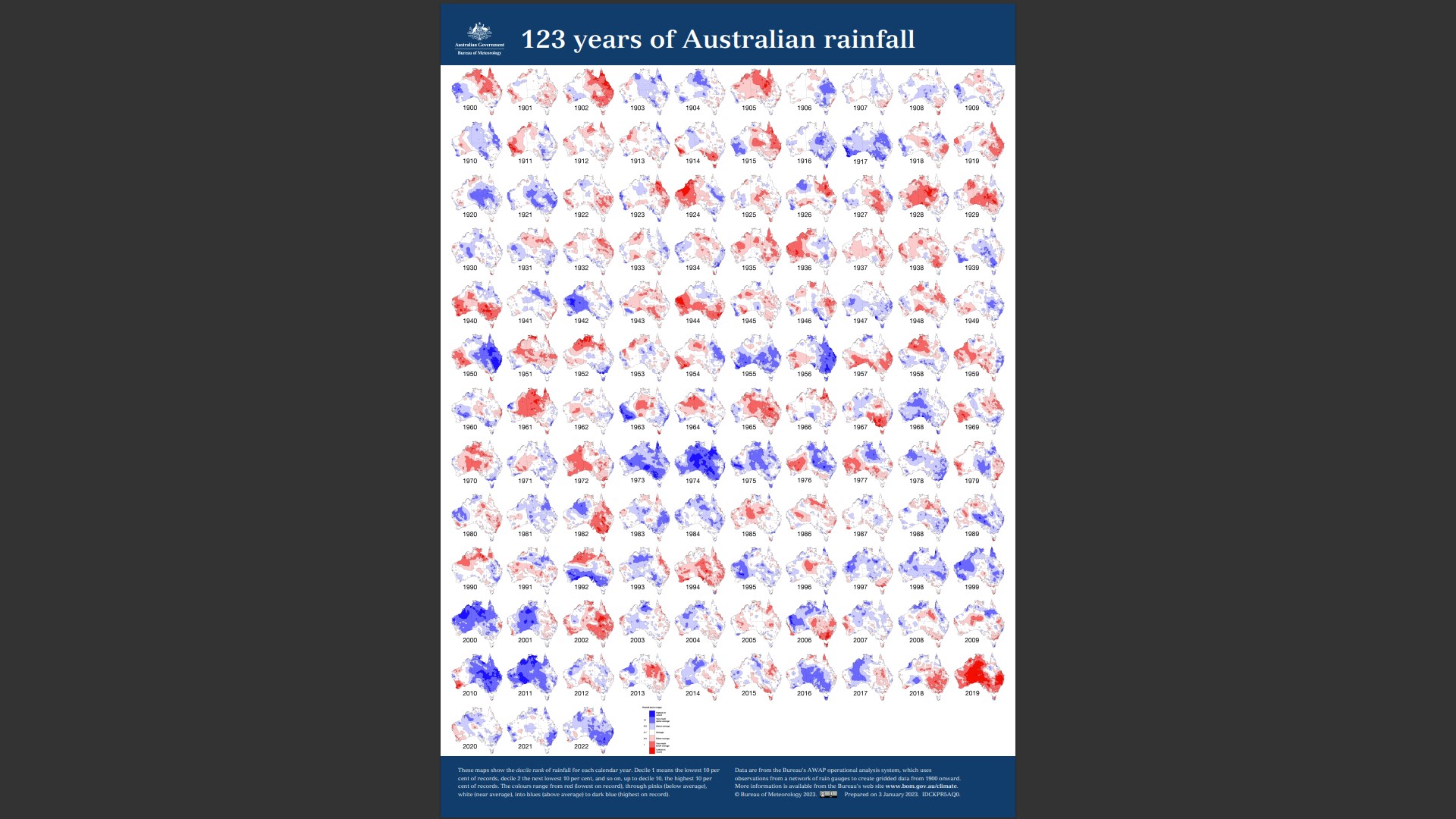Four years ago, rampant wildfires in Australia fueled an onslaught of claims that climate change was to blame. While the 2018-2019 Australian summer wildfire season featured scant rainfall and widespread wildfires (many caused by arsonists), any existing climate change signal should be visible throughout a series of many years. After all, years of above-average or below-average rainfall and wildfires have occurred from time immemorial. Looking back at recent rainfall data, it is clear that 2018-2019 was a single unusual summer within a string of above-average rainfall years that have made wildfires less likely rather than more likely. More specifically, every year since the 2018-2019 Australian summer has seen above-average rainfall throughout Australia.
The Australian Bureau of Meteorology (ABM) publishes rainfall maps going back to 1900. Each map shows areas of above-average rainfall in blue and below-average rainfall in red. From 1900 through 1972, red-dominated maps tend to be the norm. Since 1973, blue-dominated maps tend to be the norm. By the objective scientific data, rainfall in recent decades has become more abundant, which makes wildfires less frequent and severe.

Since the summer of 2018-2019, the data show 2020, 2021, and 2022 each featured above-average rainfall. Preceding the 2018-2019 Australian summer, 2016 and 2017 featured above-average rainfall, as did most other years since the turn of the century. If climate change causes more drought and wildfires, as climate activists claim, then above-average drought and wildfire years should occur more than once in a long while.
In short, the data clearly show that wildfire-stifling rainfall is becoming more frequent and abundant in our modestly warming world. Any claims that climate change caused the Australian wildfires are claims made out of scientific ignorance or deliberate misinformation.
















